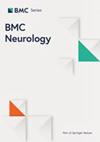利用机器学习预测卒中后独立行走:一项回顾性研究
IF 2.2
3区 医学
Q3 CLINICAL NEUROLOGY
引用次数: 0
摘要
准确预测中风患者的行走独立性非常重要。我们的目的是确定并比较逻辑回归(LR)和三种机器学习模型(极梯度提升(XGBoost)、支持向量机(SVM)和随机森林(RF))在预测脑卒中患者出院时步行独立性方面的性能,并探索预测预后的变量。回顾性纳入了中国康复研究中心在 2020 年 2 月至 2023 年 1 月期间收治的 778 例脑卒中患者(80% 用于训练集,20% 用于测试集)。训练集用于训练模型。测试集用于验证和比较四个模型在曲线下面积(AUC)、准确率、灵敏度、特异性、阳性预测值(PPV)、阴性预测值(NPV)和 F1 分数方面的性能。在三种 ML 模型中,XGBoost 模型的 AUC 明显高于 SVM 和 RF 模型(分别为 P < 0.001 和 P = 0.024)。XGBoost 模型和 LR 模型的 AUC 没有明显差异(0.891 vs. 0.880,P = 0.560)。XGBoost 模型的准确性(87.82% 对 86.54%)、灵敏度(50.00% 对 39.39%)、PPV(73.68% 对 73.33%)、NPV(89.78% 对 87.94%)和 F1 分数(59.57% 对 51.16%)均优于 LR 模型,只是特异性(96.09% 对 96.88%)略低。XGBoost 模型和逐步 LR 模型共同确定了年龄、入院时的 FMA-LE、入院时的 FAC 和下肢痉挛是影响独立行走的关键因素。总体而言,XGBoost 模型在预测卒中后独立行走方面表现最佳。XGBoost 模型和 LR 模型共同证实,年龄、入院时的 FMA-LE、入院时的 FAC 和下肢痉挛是影响卒中患者出院时独立行走的关键因素。不适用。本文章由计算机程序翻译,如有差异,请以英文原文为准。
Prediction of poststroke independent walking using machine learning: a retrospective study
Accurately predicting the walking independence of stroke patients is important. Our objective was to determine and compare the performance of logistic regression (LR) and three machine learning models (eXtreme Gradient Boosting (XGBoost), Support Vector Machines (SVM), and Random Forest (RF)) in predicting walking independence at discharge in stroke patients, as well as to explore the variables that predict prognosis. 778 (80% for the training set and 20% for the test set) stroke patients admitted to China Rehabilitation Research Center between February 2020 and January 2023 were retrospectively included. The training set was used for training models. The test set was used to validate and compare the performance of the four models in terms of area under the curve (AUC), accuracy, sensitivity, specificity, positive predictive value (PPV), negative predictive value (NPV), and F1 score. Among the three ML models, the AUC of the XGBoost model is significantly higher than that of the SVM and RF models (P < 0.001, P = 0.024, respectively). There was no significant difference in the AUCs between the XGBoost model and the LR model (0.891 vs. 0.880, P = 0.560). The XGBoost model demonstrated superior accuracy (87.82% vs. 86.54%), sensitivity (50.00% vs. 39.39%), PPV (73.68% vs. 73.33%), NPV (89.78% vs. 87.94%), and F1 score (59.57% vs. 51.16%), with only slightly lower specificity (96.09% vs. 96.88%). Together, the XGBoost model and the stepwise LR model identified age, FMA-LE at admission, FAC at admission, and lower limb spasticity as key factors influencing independent walking. Overall, the XGBoost model performed best in predicting independent walking after stroke. The XGBoost and LR models together confirm that age, admission FMA-LE, admission FAC, and lower extremity spasticity are the key factors influencing independent walking in stroke patients at hospital discharge. Not applicable.
求助全文
通过发布文献求助,成功后即可免费获取论文全文。
去求助
来源期刊

BMC Neurology
医学-临床神经学
CiteScore
4.20
自引率
0.00%
发文量
428
审稿时长
3-8 weeks
期刊介绍:
BMC Neurology is an open access, peer-reviewed journal that considers articles on all aspects of the prevention, diagnosis and management of neurological disorders, as well as related molecular genetics, pathophysiology, and epidemiology.
 求助内容:
求助内容: 应助结果提醒方式:
应助结果提醒方式:


